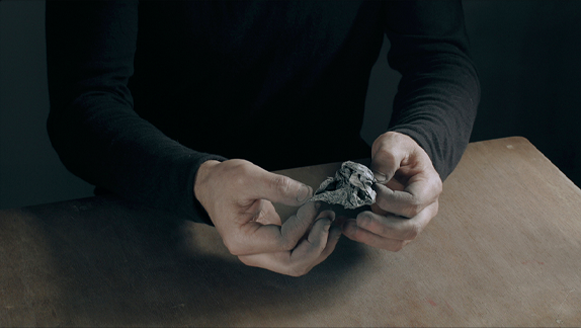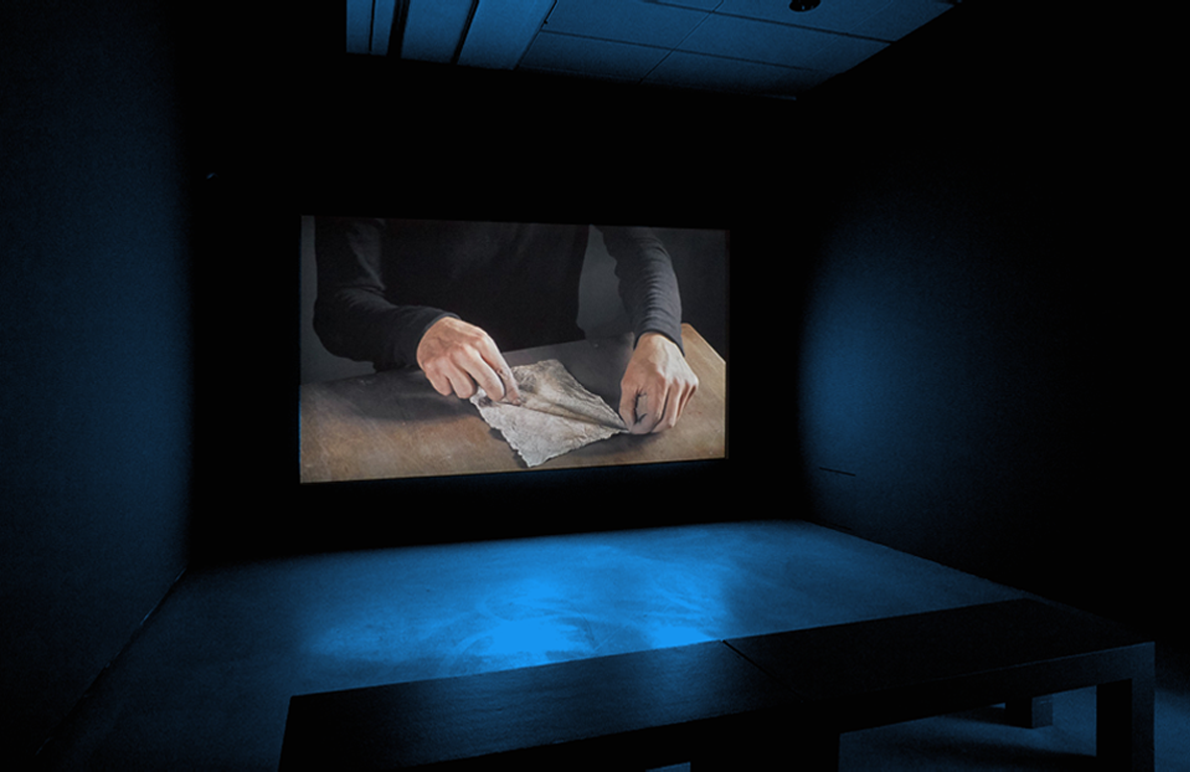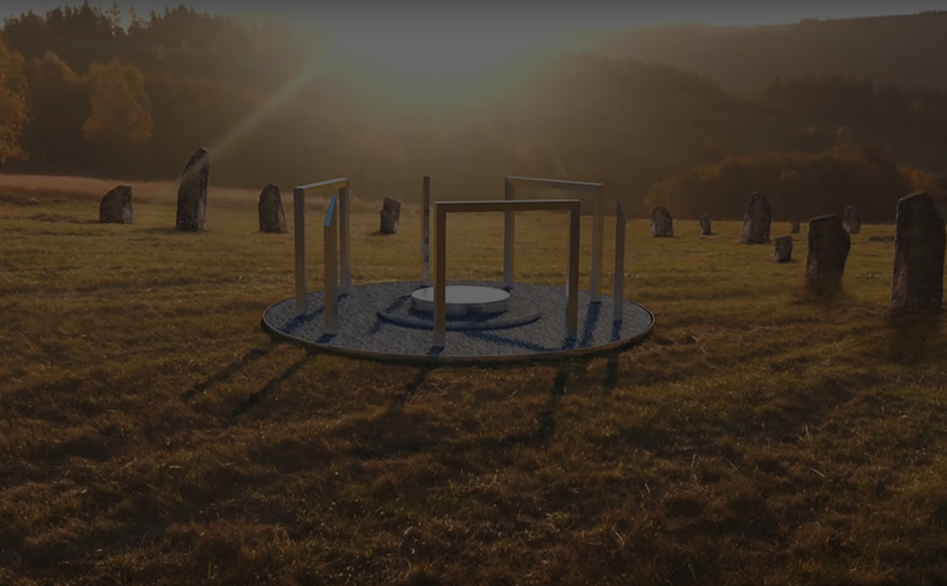Sound installations
You're a composer, visual artist, curator, architect, museum, gallery or art venue.
You want to imagine sound and its use in space as major, original elements of your creations or events.
You're looking for a recognized, competent partner to accompany you through the various stages of your project: creation, design, production, computer programming, technological integration, installation, certification, maintenance, restoration.
We create sound diffusion systems based on the latest technologies in multimedia content programming and sound spatialization.
Our teams have been involved in the production of numerous permanent and temporary sound installations in France and abroad. Always looking for new challenges, we'd be delighted to hear about your projects and share our vision and expertise with you.
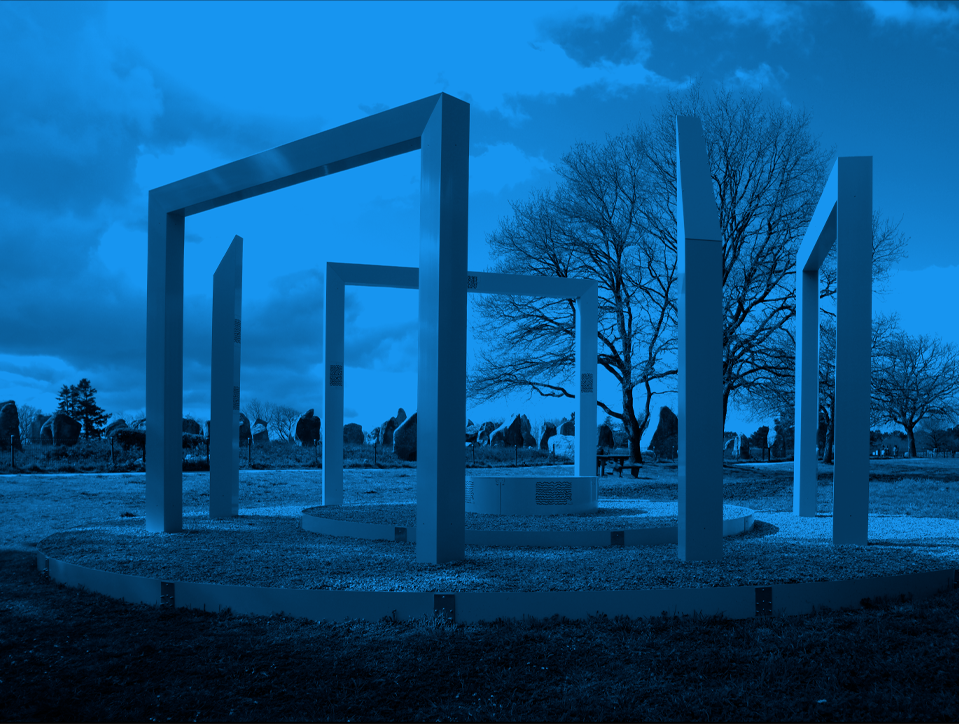
Nadine Schütz
Urban Crossing Pleyel
This soundscape trail accompanies the pedestrian crossing of the Franchissement Urbain Pleyel, which links
Paris to Saint-Denis. More than just a passageway, the bridge is intended as a destination and quality public space.
The route consists of a series of visual and sound installations integrated into the structure of the bridge and fed
by the physical data of the site.
Pluie's suspended cymbals, tuned to the bells of the Basilique de Saint-Denis
and Sacré Coeur (visible on the horizon), resonate to the rhythm of raindrops. The aeolian strings of Vent vibrate
in the wind, and the very long bench of Soleil emits aquatic sounds depending on the amount of sunlight.
These elementary instruments imbue the crossing with a restful atmosphere, anchoring the passer-by to the urban landscape. The musical ambience allows us to discover or rediscover the materiality, the elements and the unique climate of the site: wind, sun and rain, passing trains, birds: everyone becomes a musician.
Composer: Nadine Schütz
Music computer scientist:
Manuel Poletti
Sound engineer: Alexandre Chaigne
Technical realization:
Citynox, Écouter-Voir
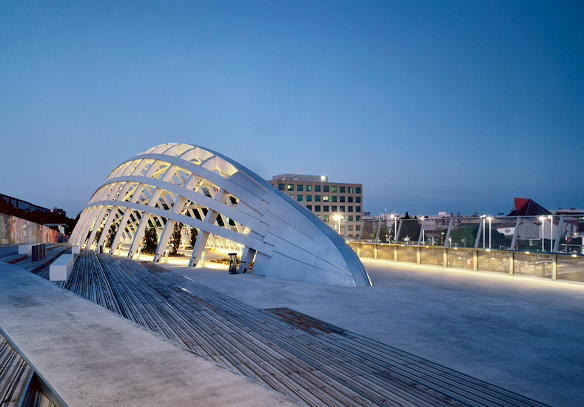


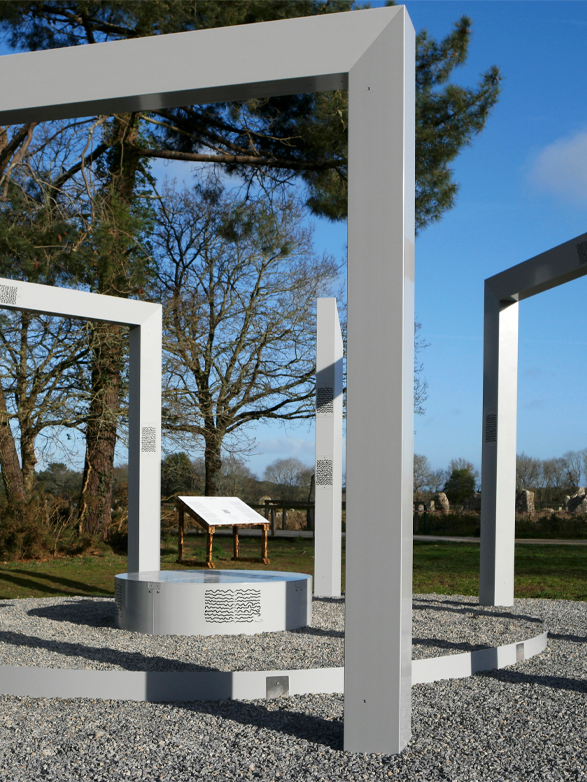
Lamozé
The Infin(i)e Limit
Sculpture composed of seven metaloniths (metal megaliths) inspired by the sacred geometry of prehistoric
megalithic sites. It was designed to integrate harmoniously with the alignments of Carnac which we know today to be
the oldest in Europe.
The menhirs of Carnac served as the initial model for the creation of numerous megalithic
sites on the Old Continent. Thanks to the previously unsuspected navigational skills of our Neolithic ancestors,
the culture of standing stones spread rapidly throughout this period. L'infini(e) Limite pays homage to the very
first megalith creators, as well as to the valiant sailors who exported this tradition from Scotland to Sicily,
via present-day Spain.
The metalonith at the center of the circles symbolizes the origin of movement. The concentric circles represent the all-encompassing spread of megalithic culture, like a wave moving on the surface of water, from the center to the extremities, evoking navigation as the main vehicle for this transmission. The outer circle is made up of a series of two triangles, representing the materialization of the principal idea. It is both a generative and interactive work, combined with a 3D audio diffusion system. Visitors placed inside the installation benefit from a total immersive sound experience. The interactivity and generativity of the work are ensured by an original system that captures the immediate sound environment of the site and uses the sources that make it up (wind, birds, humans...) to integrate them into the execution of the work after they have been transformed into stimuli. These multiple stimuli contribute to the writing of a score performed in real time by various virtual digital instruments previously created from Neolithic musical instruments: bone flutes, percussion instruments and lithophones from the Musée de l'Homme's priceless prehistory collections. In this way, today's sound environment echoes that of the past, offering visitors-interactors a symphony with multiple temporalities.
Creation, design & composition:
Lamozé
Realization in music computing & sound design: Manuel
Poletti
Musicians: Aude Publes Doyen
(voice & batá drums), Frédéric Couderc
(flutes), Damien Petitjean (lithophones),
Lamozé
(conch, lithophones, percussions, voice, programming)
Technical direction & sound engineer:
Alexandre Chaigne
Sound assistant: Owen Lempereur
Diffusion: Matthieu Duchêne
Illustration: Aurélien Roccaserra
General management: Sylvaine Nicolas &
Fabien Gougeon
Versatile technician: Cédric Ravier
Production: Music Unit
Structure manufacturing: Technilum
Art Explora Foundation
Journey to the Mediterranean
Travel the Mediterranean aboard Art Explorer, without moving?
Through a sound odyssey, Ircam and Ircam amplify invite visitors to explore the sensations of the Mediterranean
and to discover new imaginary or real soundscapes. An immersive 11-minute journey allows the visitor to encounter,
with eyes closed, the richness and diversity of the Mediterranean.
Crossing this crossroads of languages, cultural and religious practices, this sound journey in the Mediterranean
covers both urban and natural spaces, sound and living heritage. It explores the way in which creation also
questions the contemporary challenges of this evolving territory.
It is conceived as a voyage by ear: from the harbor, the listener follows the spaces and species encountered by the Art Explorer sailboat along the Mediterranean coast.
Ircam Amplify -
Art Explora Foundation
Artistic Direction: Franck Madlener
Sound Designer: Romain Barthélémy
Sound engineer: Alexandre Chaigne
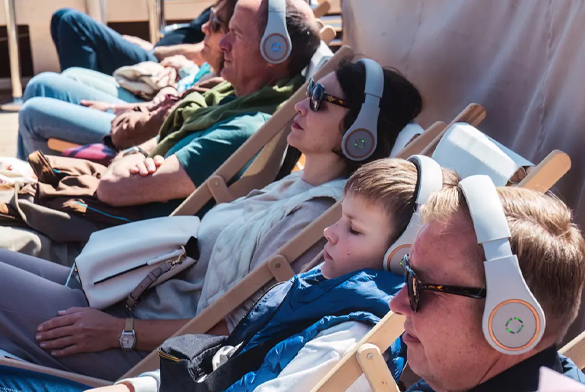

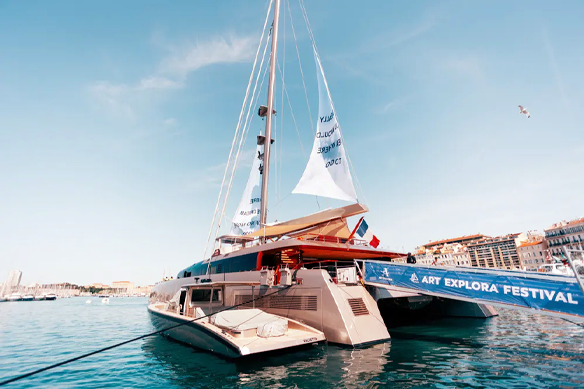
Louvre Abu Dhabi
Singing Trees
Conceived by the Théâtre du Châtelet and the Louvre Abu Dhabi, and produced by Umbrellium, Ircam Amplify and Music Unit, Singing Trees is an interactive spatialized sound installation giving voice to the trees surrounding the Louvre Abu Dhabi.
The closer the public gets to the palm trees, the more the trees begin to sing, in harmony, like a choir. As the volume and synchronization of the trees' chorus increases the closer you get to them, visitors are invited to hug the trunks, or embrace them tightly, to intensify the harmony of the vocal ensemble. At a time of climate change, Singing Trees is a work of environmental awareness that encourages the general public to become aware of their ecological footprint and take action on it.
The mission of Music Unit, with Julien Chirol in arrangements, Manuel Poletti in sound design and Martin Antiphon in sound engineering, was to give a unique voice to the trees, using a panel of songs from traditional English, French and Emirati repertoires, and voice processing technologies produced at Ircam.
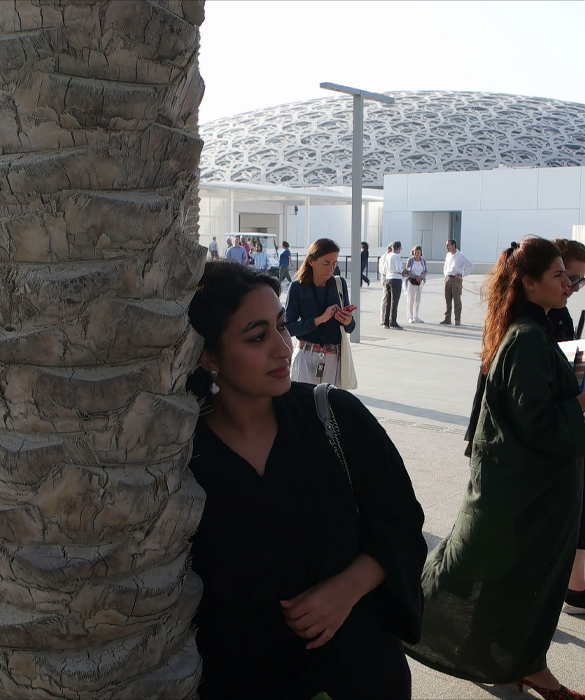
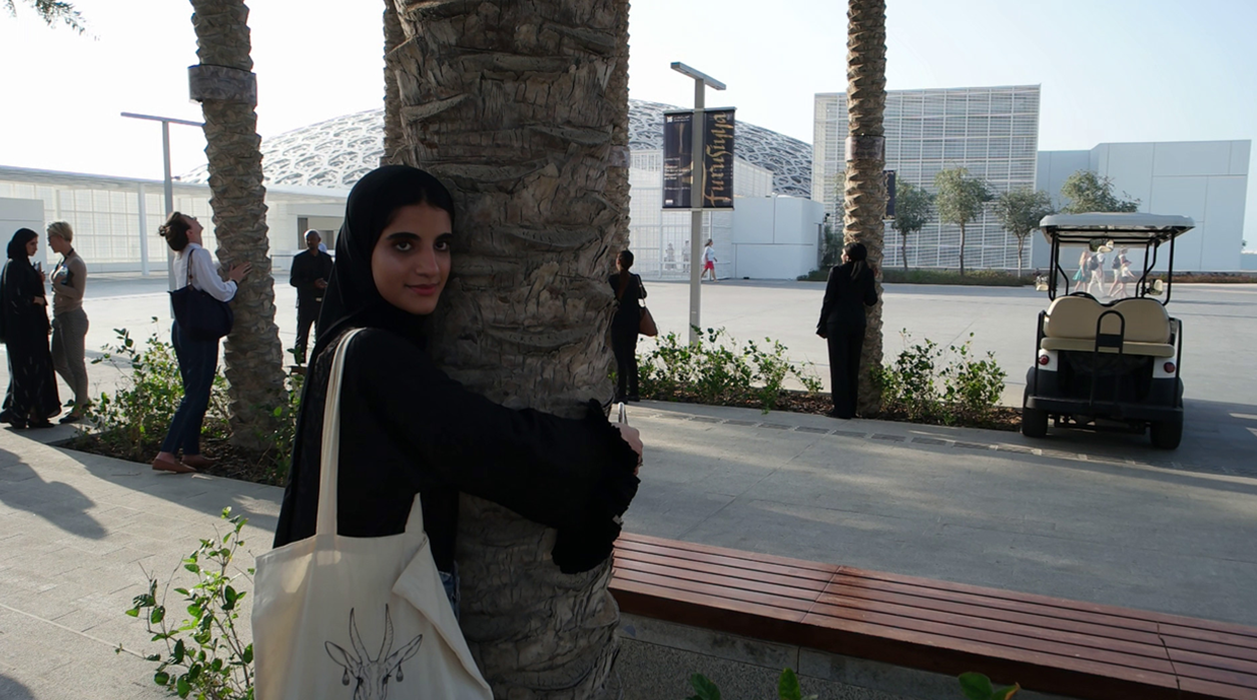
Jean-Luc Hervé
The Magic Square
This "fearful" installation is organically designed to fit into the natural surroundings of the garden. Sensors and speakers hidden in a square in the Vegetable Garden of Royaumont Abbey constantly generate and modulate sound objects created by composer Jean-Luc Hervé and modeled by sound designer Manuel Poletti.
The music in this installation is organized into recognizable, unfixed forms, subject to great variations, in order to preserve the magic of the moment. Jean-Luc Hervé relied on the observation of nature to shape these models. Like animals, when visitors approach the sound installation and are too noisy, the music stops. It resumes once calm returns. If the walker is still, if he is forgotten, remains "on the lookout", the musical dialogue is not disturbed. When he quickly approaches the sound source, a musical sequence of panic is triggered and comes alive with a large-scale spatial movement (like the movement of flocks of birds). Only by approaching slowly can he hear the singing from the hidden speaker up close. An invitation to listen, to be sensitive to what surrounds us, to keep our ears open.
The orchestra of semi-buried loudspeakers in the Potager-Jardin can be used to broadcast music and create an impressive spatial effect, like a virtual open-air concert hall - without any technical elements being visible. The effect of immersion in sound is powerful, and the enchanting view of the outdoor spaces extends the poetry. This feature naturally inspires new works by artists who visit the Abbey, notably during Royaumont's annual music festival
Composer: Jean-Luc
Hervé
Music computer scientist
music : Manuel Poletti
Sound engineer: Martin Antiphon
Sound assistants: Alexandre Chaigne,
Koré Préaud, Matthieu Duchêne


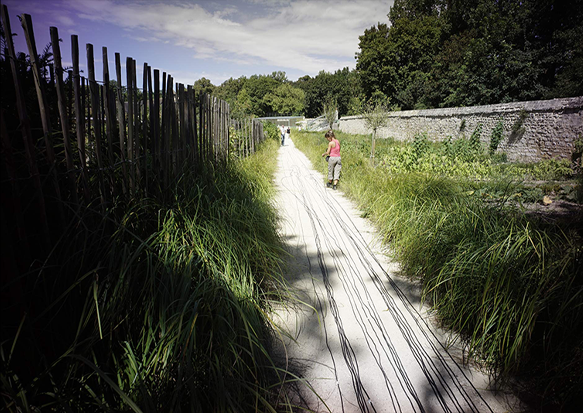
Ismaïl Bahri
Revers
A magazine page is crumpled and uncreased, in a repeated gesture: the image visibly disappears while the ink of the page is printed on the hands which, alternately, steal and reveal the evanescent image to the eye. This transfer dissolves the idealized faces and bodies of these advertising images, reduces them to dust, prints them on the fingers, while the sheet of paper itself becomes a skin, an organic tissue (François Piron).
Production: Jeu de Paume,
Paris
Sound Design & Producing: Pierre Luzy
